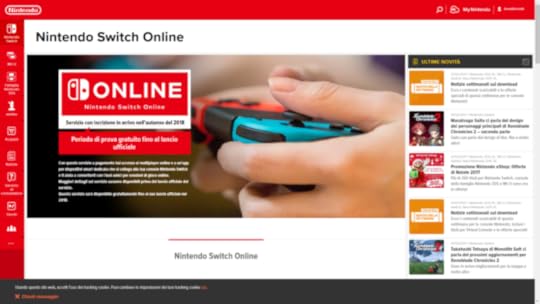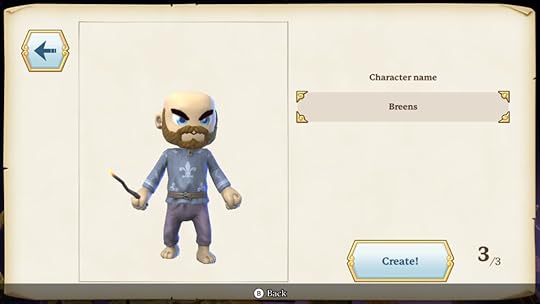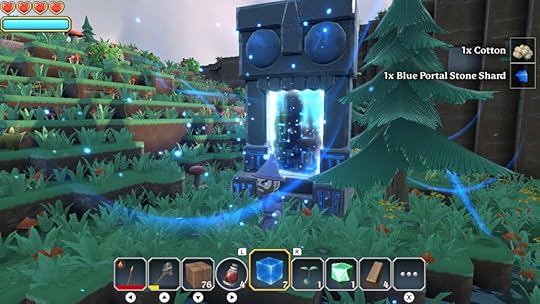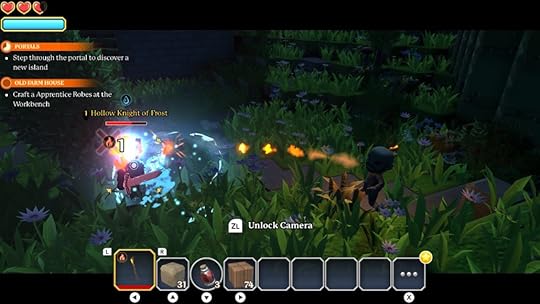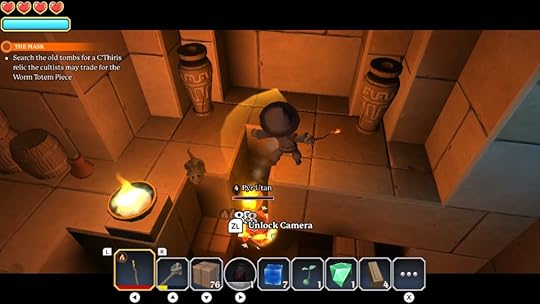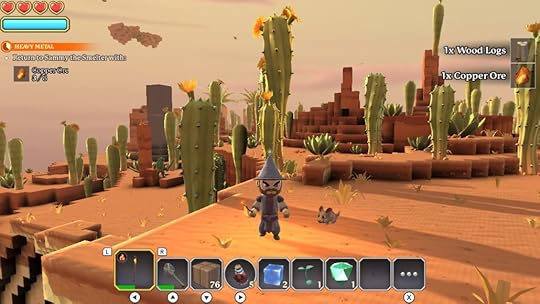Stone Marshall's Blog, page 120
January 1, 2018
Christmas Giveaway – Battlerite Deathstalker Scorpion Mount
It’s Christmas day, which means it is only benefitting for us to post a new giveaway. We’ve partnered once again with Stunlock Studios, the makers of Battlerite, for the occasion. The free-to-play game is a great success with almost three million players registered by SteamSpy and by grabbing a code in the giveaway below you’ll be able to earn a free Deathstalker Scorpion mount in the game.
Do keep in mind the following instructions for the giveaway before entering.
VALID REGIONS:
US-East
US-West
Europe
Russia
Japan
India
South Africa
Hong Kong
Australia
South East Asia (Singapore)
South America (Brazil, Chile, Peru)
HOW TO ACTIVATE YOUR FREE CHAMPION KEY ON STEAM
Download Battlerite for free at this address.
Please follow these instructions to activate a new retail purchase on Steam:
Launch the Steam client software and log into your Steam account.
Click the Games Menu.
Choose Activate a Product on Steam…
Follow the onscreen instructions to complete the process.
Open the game and go to the mount collection to find your Free Deathstalker Mount.
Battlerite is a PvP arena brawler and the spiritual successor to the critically acclaimed Bloodline Champions. Experience the unique combination of a top -down shooter meeting a fast -paced fighting game and take part in highly competitive, adrenaline-fueled 2v2 and 3v3 battles.
Engage in quick and intense action as you take control over one of many Champions, each with unique abilities to master. Welcome to a world where Champions dedicate their lives to the Arena.
QUICK ARENA ACTION
Master the Arena in explosive battles of reaction. Choose your Champion, team up with friends, and dive into combat – for glory awaits only those who seek it.
PRECISE GAMEPLAY MOVEMENT
Aim skill-shots and dodge projectiles with the use of WASD movement & cursor – based aiming. Wield total control over your champion and execute massive attacks against opponents.
PERFORM BATTLERITES
Gain strength and upgrade your abilities using rites. Select your rites to strategically customize your play style.
ACCOUNT CUSTOMIZATION
Show off your skills in style. From weapons and outfits to victory stances, there’s a huge variety of cosmetic customizations to make you stand out from the crowd.
December 31, 2017
Paid Nintendo Switch Online Service Delayed To Fall 2018

Nintendo Switch Online, the paid online service for Nintendo’s hybrid console, was originally meant to launch in Fall 2017 after the trial became available with Splatoon 2. However, we haven’t heard about it in a long time and for good reason.
As you can read below, on the Italian website it is now explained that the paid subscription service will be available in Fall (Autumn) 2018. That’s a pretty huge delay and one has to wonder whether Nintendo is simply having infrastructure issues or perhaps there will be new features to entice players to subscribe to Nintendo Switch Online. As a reminder, we’ve included below the official feature list confirmed by Nintendo at the time.
Of course, availability could vary between territories though it would be quite weird in this day and age where services and even games launch day and date globally.
Online Play on Nintendo Switch
You’ll be able to play compatible co-op and competitive games online by signing in with your Nintendo Account. Online play is free for Nintendo Account holders until our paid online service launches in 2018.
After the free-trial period, most games will require a paid online service subscription from Nintendo in order to play online. Currently the free-trial, the paid service, and online play (for applicable modes in compatible games) will be available for customers in the US, Canada, and Mexico. For the latest list of countries, please visit Customer Support.
This service is only for Nintendo Switch. It does not affect Wii U or Nintendo 3DS systems or online play.
Nintendo Switch Online app
The Nintendo Switch Online smart device app is designed to enhance your online experience for compatible games on the Nintendo Switch console.
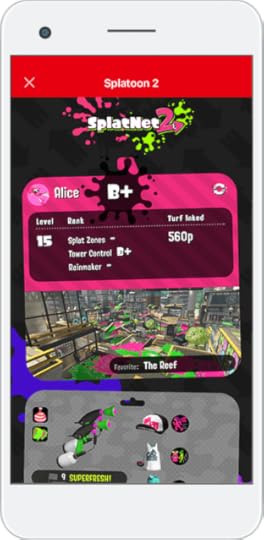
Link to compatible games
This app will initially be compatible with the Splatoon 2 game. It will give you access to SplatNet 2, where you can see your online battle stats, your gear, and much more. See details here.
Invite friends and voice chat during games
With the app, you can send online play invitations to players on your Nintendo Switch system’s friend list. The app also lets you quickly send invites via social networks and messaging services. When you’re invited to a game, you’ll get notified right away via a push notification on your smart device.
Once players are connected, you can use voice chat openly with friends while in the online lobby and during online play (depending on the game).
Classic Game Selection
Subscribers will get to download a compilation of classic titles with added online play, such as Super Mario Bros. 3, Balloon Fight and Dr. Mario.
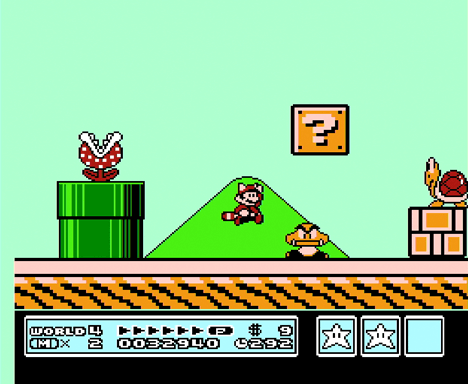
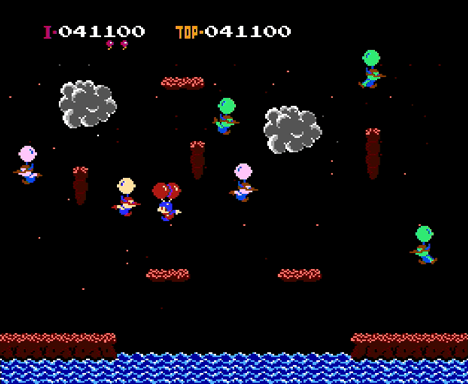
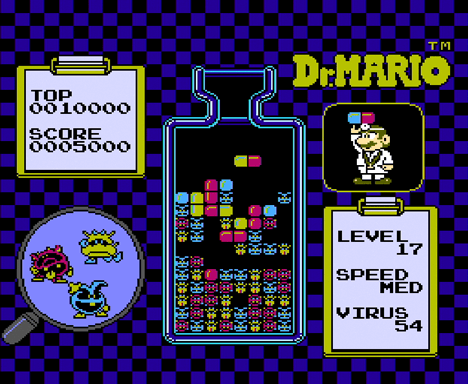
Nintendo eShop deals
Special offers for subscribers may include discounts on select digital games and content.
Pricing
1-Month Membership
$3.99 (USD)
3-Month Membership
$7.99 (USD)
12-Month Membership
$19.99 (USD)
Prices listed are in U.S. dollars and do not include tax. Pricing for additional countries will be announced closer to the launch of the service.
Portal Knights Review â Minecraft + RPG â Fun
Thereâs a tendency among Minecraft-alikes to forget what made Minecraft so popular. Aside from the novel pricing during alpha, LEGO comparisons, and a vague crafting system that really forced the community to come together, it was the freedom of it. You drop into the world, and you go anywhere, do anything, build the world you want to build. Yes, I know that youâre fully aware of what Minecraft is, but the building blocks (hehe) of its success cannot be understated.
Imagination is required in Minecraft, with the limited selection of blocks you must take yourself back a few hundred feet and squint a wee bit in order to have your majestic replica of a castle look like your reference point â but this imagination requirement also makes absolutely anything that much more feasible. Adding details, more block types, and most damagingly, linearity; well, it just doesnât gel with the way the game should be played. Itâs something games inspired by Minecraft have yet to learn, and Portal Knights is yet another title where Iâm sure it seemed like a great idea at the time.
Itâs a shame though, because the foundations of Portal Knights are all here, and theyâre solid, with some great ideas. Take the basic crafting formula of Minecraft, which is tried and tested, and introduce more customisability, more interesting, detailed environments, heck just a few RPG elements to make things unique. All great ideas, all implemented well, but together, it all feels like a bit of a mess.
In Portal Knights you start as a basic Warrior, Ranger or Mage class in a tutorial area, where some quests will run you through combat, collecting materials, crafting and progressing through the game. You do set your own pace, for the most part, and the game never rushes you, but thereâs also no agency. Or reason to do anything, I suppose. Exploring the world and making progress is its own reward, but what is defined as progress is a bit weird. Is it completing quests? Achieving your own goals and building your own structures? Crafting new gear? I suppose its all of these things, but none of them made me feel like I was, well, progressing. Or enjoying the experience.
Instead, it felt more like a checkbox exercise. Upgrading the Workbench to Workbench II happened because the quest told me to. Sure, it was a tutorial quest, teaching me how to upgrade things â but I also donât know what new avenues that opened up for me. The game never told me why it was necessary, it just was. Having tutorial quests for things like this are nice, but then the game left me alone to figure out how to repair my tools â which degrade really fast. Luckily itâs simple enough to repair them, once you figure out how.
Once youâre done mucking around in the tutorial area itâs time to move on, by crafting a portal from blue stone shards. You collect these from almost everything, so you should have plenty after killing monsters and mining for resources. Each portal you complete opens up the next area, which has a different theme, vibe and monsters. They feel like unique areas, something Minecraft wishes it had. Sadly though, the randomly generated nature of the world lets it down. In one world I had generated, a house was on top of a hill overlooking the rest of the area. Beautiful. In another, that same building was in a pit that I had to dig my way out of. Not so beautiful.
When you jump into Portal Knights and generate your own world you can select from a Small or Large world size, and the largest world size isnât exactly that big. Not a problem though, since there are loads of different âstagesâ to visit, not confining you to a single, limited open world. Each stage is unique, taking on different appearances, such as desert, forest, snowfield, and changing to a different season, Autumn, Spring, etc. The change of scenery is a welcome addition and makes traveling between them feel like thereâs some genuine progress between each one.
Simple acts like mining, however, feel so frustrating. It sounds minor, but itâs awkward to aim at a single block to mine in third person (there is, of course, a first person mode) and the mining just takes too long. Perhaps this is an isolated complaint, but staring at blocks to slowly chip away at them is a tedious process, especially on top of all of the regular combat youâll be doing. It takes too long to collect a single block, even with the proper tools, and it makes digging a staircase out of a hole super frustrating â more frustrating still, is that sometimes the game will essentially tell you to get into the holes before making you burrow your way out, unless you warp to a past area.
On top of a myriad of small frustrations, we even have an apparently Switch-specific bug, where the Warrior â the only melee class â canât hit flying monsters. They fly right over the weaponâs hitboxes, and itâs utter nonsense. The development team made it clear that theyâre aware of the issue and are fixing, but when an RPG-like game has only three classes, having one of them being entirely broken is unforgivable.
But, itâs not all doom and gloom. Portal Knights is a very pretty game, and although the framerate can chug at times, it never became a serious problem in my time playing the game. The abundance of flora covering the world gives everything a bit of extra depth, but it also makes the blocks underneath more difficult to see. Typical. Itâs a shame, but it feels like for every positive addition this game has over its basic block-placing buddies, thereâs also a negative point to counter anything I can praise. A real shame, because I think Portal Knights had great promise, but I wouldnât recommend it over either Minecraft or Dragon Quest Builders.
Reviewed on Nintendo Switch (code provided by the publisher). You can purchase the game on Amazon.
5.8
Portal Knights is a Minecraft-alike with a lot of personality and a lot of promise, but in its current state, I just couldnât enjoy it. It feels bloated in places, empty in others, and just canât compare to other games in the block-placing, creation âgenreâ. Fun for a while, but outstays its welcome too quickly.
Portal Knights Review – Minecraft + RPG – Fun
There’s a tendency among Minecraft-alikes to forget what made Minecraft so popular. Aside from the novel pricing during alpha, LEGO comparisons, and a vague crafting system that really forced the community to come together, it was the freedom of it. You drop into the world, and you go anywhere, do anything, build the world you want to build. Yes, I know that you’re fully aware of what Minecraft is, but the building blocks (hehe) of its success cannot be understated.
Imagination is required in Minecraft, with the limited selection of blocks you must take yourself back a few hundred feet and squint a wee bit in order to have your majestic replica of a castle look like your reference point – but this imagination requirement also makes absolutely anything that much more feasible. Adding details, more block types, and most damagingly, linearity; well, it just doesn’t gel with the way the game should be played. It’s something games inspired by Minecraft have yet to learn, and Portal Knights is yet another title where I’m sure it seemed like a great idea at the time.
It’s a shame though, because the foundations of Portal Knights are all here, and they’re solid, with some great ideas. Take the basic crafting formula of Minecraft, which is tried and tested, and introduce more customisability, more interesting, detailed environments, heck just a few RPG elements to make things unique. All great ideas, all implemented well, but together, it all feels like a bit of a mess.
In Portal Knights you start as a basic Warrior, Ranger or Mage class in a tutorial area, where some quests will run you through combat, collecting materials, crafting and progressing through the game. You do set your own pace, for the most part, and the game never rushes you, but there’s also no agency. Or reason to do anything, I suppose. Exploring the world and making progress is its own reward, but what is defined as progress is a bit weird. Is it completing quests? Achieving your own goals and building your own structures? Crafting new gear? I suppose its all of these things, but none of them made me feel like I was, well, progressing. Or enjoying the experience.
Instead, it felt more like a checkbox exercise. Upgrading the Workbench to Workbench II happened because the quest told me to. Sure, it was a tutorial quest, teaching me how to upgrade things – but I also don’t know what new avenues that opened up for me. The game never told me why it was necessary, it just was. Having tutorial quests for things like this are nice, but then the game left me alone to figure out how to repair my tools – which degrade really fast. Luckily it’s simple enough to repair them, once you figure out how.
Once you’re done mucking around in the tutorial area it’s time to move on, by crafting a portal from blue stone shards. You collect these from almost everything, so you should have plenty after killing monsters and mining for resources. Each portal you complete opens up the next area, which has a different theme, vibe and monsters. They feel like unique areas, something Minecraft wishes it had. Sadly though, the randomly generated nature of the world lets it down. In one world I had generated, a house was on top of a hill overlooking the rest of the area. Beautiful. In another, that same building was in a pit that I had to dig my way out of. Not so beautiful.
When you jump into Portal Knights and generate your own world you can select from a Small or Large world size, and the largest world size isn’t exactly that big. Not a problem though, since there are loads of different “stages” to visit, not confining you to a single, limited open world. Each stage is unique, taking on different appearances, such as desert, forest, snowfield, and changing to a different season, Autumn, Spring, etc. The change of scenery is a welcome addition and makes traveling between them feel like there’s some genuine progress between each one.
Simple acts like mining, however, feel so frustrating. It sounds minor, but it’s awkward to aim at a single block to mine in third person (there is, of course, a first person mode) and the mining just takes too long. Perhaps this is an isolated complaint, but staring at blocks to slowly chip away at them is a tedious process, especially on top of all of the regular combat you’ll be doing. It takes too long to collect a single block, even with the proper tools, and it makes digging a staircase out of a hole super frustrating – more frustrating still, is that sometimes the game will essentially tell you to get into the holes before making you burrow your way out, unless you warp to a past area.
On top of a myriad of small frustrations, we even have an apparently Switch-specific bug, where the Warrior – the only melee class – can’t hit flying monsters. They fly right over the weapon’s hitboxes, and it’s utter nonsense. The development team made it clear that they’re aware of the issue and are fixing, but when an RPG-like game has only three classes, having one of them being entirely broken is unforgivable.
But, it’s not all doom and gloom. Portal Knights is a very pretty game, and although the framerate can chug at times, it never became a serious problem in my time playing the game. The abundance of flora covering the world gives everything a bit of extra depth, but it also makes the blocks underneath more difficult to see. Typical. It’s a shame, but it feels like for every positive addition this game has over its basic block-placing buddies, there’s also a negative point to counter anything I can praise. A real shame, because I think Portal Knights had great promise, but I wouldn’t recommend it over either Minecraft or Dragon Quest Builders.
Reviewed on Nintendo Switch (code provided by the publisher). You can purchase the game on Amazon.
5.8
Portal Knights is a Minecraft-alike with a lot of personality and a lot of promise, but in its current state, I just couldn’t enjoy it. It feels bloated in places, empty in others, and just can’t compare to other games in the block-placing, creation “genre”. Fun for a while, but outstays its welcome too quickly.
December 30, 2017
Minecraft edition made in East Linton goes double platinum in Japan
THE head of a computer games studio based in an East Lothian village has collected a prestigious award in Japan after a game he helped develop sold more than two million copies in Asia.
Paddy Burns, CEO of East Linton-based 4J Studios, was at the PlayStation Awards at the Grand Prince Hotel to collect a double platinum award for Minecraft.
That award acknowledges that the game has sold more than two million copies in Asia across the PlayStation 4, PlayStation 3 and PlayStation Vita consoles.
Mr Burns explained how the county-based business had helped develop the worldwide hit game.
He told the Courier: “Microsoft bought the creators of the Minecraft game [Mojang] for $2.5 billion in 2014 but 4J Studios are independent and develop the console editions of Minecraft for Microsoft on Xbox One, Xbox 360, PlayStation 4, PlayStation 3, PlayStation Vita, Nintendo Switch and Nintendo Wii U.”
At the ceremony in Tokyo, Mr Burns said it was a “great honour” to accept the award.
He said: “I was delighted to receive the award and to visit Japan for the first time.
“I had quite a few Sony people coming up to me at the after show party to thank me for developing the game for Sony consoles and to say how much they enjoy playing the game with their kids.”
And while Mr Burns, who set up 4J Studios with Chris van der Kuyl and Frank Arnot, knew in advance that he would be on stage, he was not aware they were the only recipients of the double platinum award.
He added: “I was told in advance that we were receiving the award but didn’t know we were the only game to have achieved a double platinum award, so that was a nice surprise!
“It caused some surprise that it was a Western game and that there was a Microsoft representative getting an award at a Sony show.”
The 4J Studios console edition versions of Minecraft – which allows players to build with a variety of different cubes in a 3D world – have now sold more than 50 million copies worldwide.
The East Linton office is based in the bottom floor of Mr Burns’ house in the village.
A seven-strong software and internal test team are based in East Linton, while the art and world-building teams are at the company’s Dundee office.
Minecraft edition made in East Linton goes double platinum in Japan
Review: Minecraft: Story Mode Season Two – Episode 5: Above and Beyond
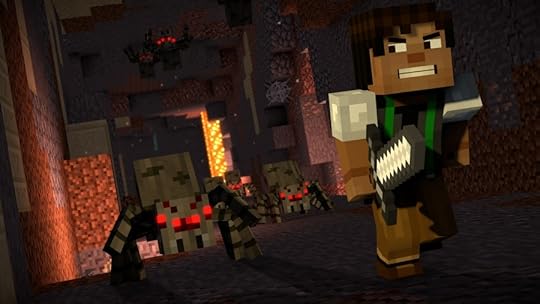
The Season Two story on the whole is a mishmash of various elements without an overall key focus. Yes, there is a main villain, the Admin, however the way in which he is used fluctuates wildly between episodes. One minute he has taken the form of a giant sea temple guardian to destroy Beacon Town (oh how we wish he had, we’re sick of that place), the next minute he is a snowman who has challenged you to navigate a labyrinth of puzzles, then suddenly he is bedrocking over the whole world trying to start a fresh one. Throughout the entire season his motives are left a mystery to the player and as for his masterplans, they are utter nonsense.
Season Two also suffers from pacing issues and using the same environments too many times, Beacon Town being the main culprit. It was a pretty uninteresting location in the first season and then to be forced to explore it again in the opening of Season Two only for it to be brought back again for the majority of the finale is disappointing to say the least. The pacing is rather slow throughout the season and the finale is especially slow to get going as Jesse and gang take their time planning their approach to stop the Admin in a flash-forward scene that you then play through a few minutes later almost entirely as planned. As if to rub salt in your wounds, the most interesting bit where you get to fight the Admin is rushed over like it’s irrelevant and feels like a really anticlimactic ending to the season.
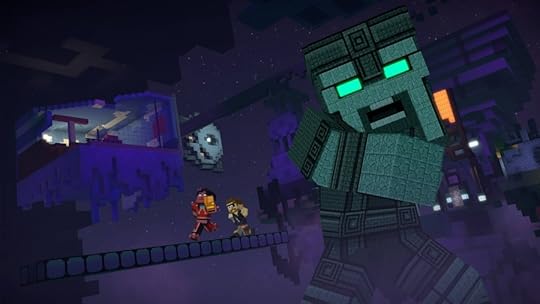
About half way through Above and Beyond is a puzzle that has no explanation on how it can be solved; it’s also required to be solved to progress. It involves removing blocks from a grid with numbers at one side; all you have to help you out is the code #Potato451. As for what that means or refers to we have no idea, as far as we’re aware it’s utter nonsense. Although it’s just a simple enter the code puzzle the way in which it is designed is confusing as you have to remove blocks from a wall and if you can’t figure that out you won’t be able to progress and just be left staring blankly at a wall.
The finale spends a lot of time undoing the decisions you made in the previous episodes as characters that you thought had met their demise magically reappear to save you or just because they can. It’s a real shame as it makes all the decisions feel redundant even though at the time of deciding it seems critical to make the right choice. The outcomes generally end up the same no matter what you choose.
Conclusion
Above and Beyond is a rather disappointing end to a rather lacklustre second season for Minecraft: Story Mode. The season’s plot is forgettable, the pacing is slow throughout, and the same environments are used repeatedly. Although the final boss fight is enjoyable, the ending is surprisingly anticlimactic. Unless you were a huge fan of Jesse’s first outing, you won’t be missing much by skipping this season.
Review: Minecraft: Story Mode Season Two – Episode 5: Above and Beyond
December 29, 2017
MPAVILION Redesign MPavilion with Minecraft
What would MPavilion look like if it was co-designed by kids using Minecraft? Find out in this interactive workshop hosted by our friends at Matters Journal, as they bring to life a feature story from ‘Mini Matters’—the first ‘mini’ print publication of Matters Journal.
Based on the ‘Block by Block’ program developed by UN-Habitat in partnership with Mojang, this workshop gives kids aged eight to fifteen a chance to bring their creative visions to life, using the video game Minecraft to build a virtual model—all the while exploring new ways of using technology and design to engage communities in the public realm.
If you or your friends have children who love Minecraft, building things or all of the above, bring them along to MPavilion for this workshop facilitated by some highly experienced and tech-savvy big kids. Channel your love of Minecraft, architecture, engineering or design as an online facilitator for this IRL multiplayer activity—redesigning MPavilion Minecraft-style! Following the event, Monash University’s Department of Materials and Science Engineering will 3D print the designs created during the workshop.
This is a free workshop. Drop-ins welcome but registration is encouraged! This workshop is limited to 24 kids (aged 8–15) and 16 big kids (aged 15+).
Realms Clubs come to Minecraft — sharing that giant pixel block Cthulhu is now easier than ever
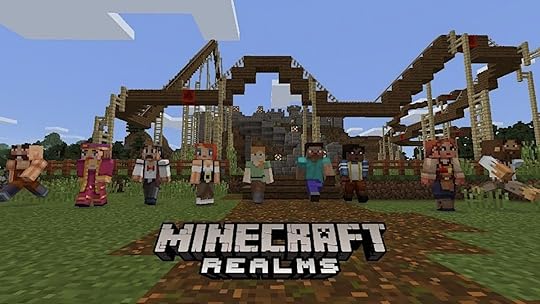
Minecraft Realms are servers run by Microsoft where players can invite their friends for private games.
It’s a great place to play together if you want to work on a particular project or collaborate to a higher degree. Today, the Minecraft team revealed Realms Clubs, online meeting places created specifically for members of your Realms to share creations and socialize. In your Realms Club, you can share posts with each other and like videos, photos and comments.
Realms Clubs will begin rolling out today for Minecraft on Xbox One, mobile, and Windows 10. They’re are automatically created for your Realm, and anyone you invite to your Realm is also added to the Club. You can access your Realms Clubs from the Xbox App on PC, mobile, or console, or directly from your Realms menu in Minecraft.
To take a screenshot, just pause the game and hit the button with the Camera icon next to the “Feed” button. Pressing this button will take a screenshot of the current view — excluding the menu — and add it to your list of saved screenshots or directly to your Realms Clubs feed. This is a great way to share your structures with everyone in the Club.
For those worried about what people post, players can report comments and posts in your Club to the club administrator, who can then delete posts and comments and remove players from the Club if necessary. It’s a curated experience which should make parents feel comfortable about their children playing on them. For example, children need a parent to adjust their permissions in order to use Realms and Realms Clubs. They can’t see any content posted in Clubs without additional parental permissions.
Realms Clubs sounds like great ways to collaborate with one another so it’s important gamers only invite people they know. It’s the administrator’s responsibility to make sure their Club operates smoothly and is a positive experience for everyone.
Realms Clubs come to Minecraft — sharing that giant pixel block Cthulhu is now easier than ever
December 28, 2017
‘Minecraft: Story Mode – Season Two’ Season Finale Now Available for Download on All Platforms
SAN RAFAEL, Calif., and STOCKHOLM, Sweden, December 19th, 2017 — Award-winning developer and publisher of digital entertainment Telltale Games and world-renowned game developer Mojang today launched the fifth and final episode of Minecraft: Story Mode – Season Two. The episode, entitled ‘Above and Beyond,’ is now available for download on Xbox One, PlayStation 4, PC, Mac, iOS, and Android-based devices, as well as through Telltale’s own online store.
The home Jesse left so long ago — Beacontown — has succumbed to the iron rule of the Admin. Menacing guards patrol the streets, anxious citizens tremble in fear, and worst of all, everyone believes Jesse is responsible thanks to the Admin’s devious disguise. In order to save the city, the real Jesse must find a way to zap the Admin’s powers and take him down once and for all…
Minecraft: Story Mode – Season Two continues Jesse’s saga in a five-part, narrative-driven, episodic game series developed by Telltale in collaboration with Minecraft developer Mojang and members of the Minecraft community. Though players’ choices from the first season will optionally carry over into season two, this new season is intended to be accessible to both returning fans and newcomers alike.
This second season includes Telltale’s unique multiplayer ‘Crowd Play’ feature, which allows friends and family to engage with the adventure together by helping to decide the direction of the story from any mobile device with an online connection. This season also features voice work from Patton Oswalt, Catherine Taber, Ashley Johnson, and Scott Porter, as well as cameos from Stampy Cat, stacyplays, and other personalities from the Minecraft community on YouTube.
Minecraft: Story Mode – Season Two is a standalone product separate from both the core Minecraft game and season one of Minecraft: Story Mode. Season two is available for download on Xbox One, PlayStation 4, PC, Mac, iOS, and Android-based devices. A retail version on disc is also available. Episode five has been rated ‘Everyone 10+’ by the ESRB.
For more information on Telltale Games, visit the official website, follow @TelltaleGames on Twitter, and like Telltale on Facebook.
For more information on Mojang, visit the official website, follow @Mojang and @Minecraft on Twitter, and like Minecraft on Facebook.
About Mojang
Mojang AB is a Microsoft-owned games studio based in Stockholm, Sweden. We’re responsible for the relatively popular video game Minecraft. We also created the card-collecting tactical battler Scrolls, and have dabbled in publishing with Oxeye Game Studio’s awesome side-scrolling robo-blaster Cobalt. We’re developing more games, too, but we’re not ready to talk about those quite yet.
About Telltale, Inc.
Telltale is a leading independent developer and publisher of games for every major interactive platform, including PC, home consoles, and mobile devices. It also pioneered the episodic delivery of digital gaming content.
Founded in 2004 by games industry veterans with decades of experience, Telltale quickly became an industry leader, with numerous honors and awards from the Academy of Interactive Arts and Sciences, BAFTA, IMGA, and more. In 2012, Telltale was named Studio of the Year after establishing a model for successful episodic game creation and digital publishing.
Telltale’s reputation for quality has been established across more than three dozen different product releases over the years, earning acclaim from publications like IGN, The New York Times, and Variety, as well as over 100 “Game of the Year” awards. Telltale is a fully licensed third party publisher on consoles from Microsoft, Sony, and Nintendo, and also publishes games on the PC, Mac, and Apple iOS platforms.
Press Release © 2017 Telltale, Inc.
TELLTALE CONTACT: Scott Butterworth // pr@telltalegames.com
MOJANG CONTACT: Marsh Davies // marsh@mojang.com
‘Minecraft: Story Mode – Season Two’ Season Finale Now Available for Download on All Platforms
‘Minecraft’ Studio Releases New Game, ‘Cobalt WASD’
Mojang, the creators and original publisher of Minecraft, today released Cobalt WASD, a new game created by a team that includes one of the a lead developer of Minecraft.
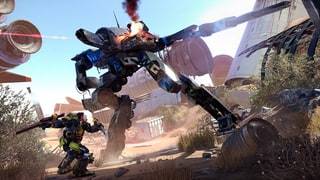
The Best (Overlooked) Games of 2017
Ten hidden gaming gems you may have missed in 2017
Developer Oxeye Studios describe Cobalt WASD as a multiplayer follow-up to their robo-RPG Cobalt. The game introduces competitive team-play in the style of a side-scrolling Counter-Strike and controls tuned for mouse-aim and keyboard.
In the game, two teams of bots fight across multiple rounds to try and plant and detonate bombs in their opponents’ base. Each round earns money the teams can spend on equipment and weaponry, much like in popular first-person shooter Counter-Strike: Global Offensive. But in the case of Cobalt WASD, the equipment and weapons are a bit more unrealistic, like a stealth suit, reflector shield, radioactive crossbows and a time-slowing bomb.
The game is available starting on November 30th on Steam for Windows machines and will support player-createod maps and modes through Steam Workshop. The developers say they created the game specifically for PC, which means it has mouse-aim, dedicated servers, lots of camera settings, a native resolution of 1920×1080 and can even run at 1000 frames per second. The game will sell for about $8.30 (it will be €6.99). But it will be free to folks who were alpha testers.
You can also pick up the original Cobalt for the reduced price of about $18, once WASD launches, or get both in a bundle for about $23.
Oxeye game Studios is an indie game studio made up of former Minecraft lead developer Jens Bergensten, Daniel Brynolf and Pontus Hammarberg.

